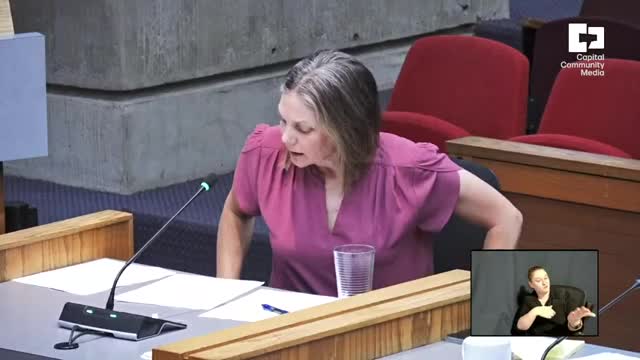Council debates crucial funding for affordable housing projects
July 08, 2024 | Salem , Marion County, Oregon

This article was created by AI summarizing key points discussed. AI makes mistakes, so for full details and context, please refer to the video of the full meeting. Please report any errors so we can fix them. Report an error »

During a recent city council meeting, members engaged in a robust discussion regarding proposed policy changes and budget allocations, particularly focusing on the Capital Improvement Program (CIP) and associated financial policies.
Councilor Phillips expressed strong support for moving forward with the proposed policies, emphasizing the extensive work done by staff to align these policies with council objectives. Despite some councilors advocating for a delay to gather more information, Phillips highlighted the importance of not stalling progress, especially given the potential impacts on the CIP.
Councilor Nordyke raised concerns about the lack of contextual information accompanying the financial policies, suggesting that clearer descriptions of each fund and its budget would facilitate better decision-making. This sentiment was echoed by other council members who felt overwhelmed by the volume of information presented without adequate explanation.
The discussion also touched on the streetlight fee, which has not been updated since 2015. Councilor Hoye questioned the fee structure and its implications for residents, while staff clarified that future adjustments would be based on a combination of consumer price index (CPI) changes and operational costs.
In a significant development, an amendment was proposed to incorporate equity considerations into the CIP scoring process. This amendment aims to ensure that all residents have equitable access to the benefits of capital projects. Councilor Stapleton, who introduced the amendment, noted that it aligns with previous discussions on using an equity lens for public funding decisions.
Despite some councilors expressing reservations about fee increases being included in the consent agenda, the council ultimately voted to pass the amended motion, which now includes the equity framework. The council's decision reflects a commitment to transparency and inclusivity in the allocation of public resources.
The meeting concluded with a motion to allocate $3 million from the safety and livability bond for off-site improvements necessary for new affordable housing units, signaling a proactive approach to addressing housing needs in the community.
Councilor Phillips expressed strong support for moving forward with the proposed policies, emphasizing the extensive work done by staff to align these policies with council objectives. Despite some councilors advocating for a delay to gather more information, Phillips highlighted the importance of not stalling progress, especially given the potential impacts on the CIP.
Councilor Nordyke raised concerns about the lack of contextual information accompanying the financial policies, suggesting that clearer descriptions of each fund and its budget would facilitate better decision-making. This sentiment was echoed by other council members who felt overwhelmed by the volume of information presented without adequate explanation.
The discussion also touched on the streetlight fee, which has not been updated since 2015. Councilor Hoye questioned the fee structure and its implications for residents, while staff clarified that future adjustments would be based on a combination of consumer price index (CPI) changes and operational costs.
In a significant development, an amendment was proposed to incorporate equity considerations into the CIP scoring process. This amendment aims to ensure that all residents have equitable access to the benefits of capital projects. Councilor Stapleton, who introduced the amendment, noted that it aligns with previous discussions on using an equity lens for public funding decisions.
Despite some councilors expressing reservations about fee increases being included in the consent agenda, the council ultimately voted to pass the amended motion, which now includes the equity framework. The council's decision reflects a commitment to transparency and inclusivity in the allocation of public resources.
The meeting concluded with a motion to allocate $3 million from the safety and livability bond for off-site improvements necessary for new affordable housing units, signaling a proactive approach to addressing housing needs in the community.
View full meeting
This article is based on a recent meeting—watch the full video and explore the complete transcript for deeper insights into the discussion.
View full meeting
